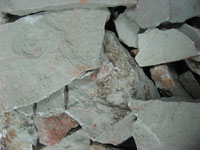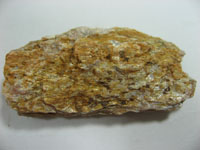

The literal building blocks of the world we live in, rocks play an important role in our daily lives. The MIROFOSS Rocks Gallery contains a collection of rocks that is constantly 'building' up more information. From the everyday basics such as limestone and granite, to some uncommon and colourful schist, MIROFOSS may help you create some concrete opinions about the world around you. Rocks in this gallery are organized by common rock type. You can search the entire MIROFOSS database by -clicking here- or you can choose a rock type from the descriptions below or from the menu on the right side of the screen. Remember, you can always find help in the help menu or by -clicking here-.

 |
Igneous Articles Articles in this section of the MIROFOSS rock gallery are all about the igneous rocks. Igneous rock is formed through the cooling and solidification of magma or lava. Igneous rock may form with or without crystallization, either below the surface as intrusive rocks or on the surface as extrusive rocks. Over 700 types of igneous rocks have been described, most of them having formed beneath the surface of Earth's crust. |
 |
Sedimentary Articles Articles in this section of the MIROFOSS rock gallery are all about the sedimentary rocks. Sedimentary rocks are types of rock that are formed by the deposition of material at the Earth's surface and within bodies of water. Particles that form a sedimentary rock by accumulating are called sediment. Before being deposited, sediment was formed by weathering and erosion in a source area, and then transported to the place of deposition by water, wind, ice, mass movement or glaciers which are called agents of denudation. |
 |
Metamorphic Articles Articles in this section of the MIROFOSS rock gallery are all about metamorphic rocks. Metamorphic rocks arise from the transformation of existing rock types, in a process called metamorphism, which means "change in form". The original rock is subjected to heat and pressure, causing profound physical and/or chemical change. Metamorphic rocks make up a large part of the Earth's crust and are classified by texture and by chemical and mineral assemblage. They may be formed simply by being deep beneath the Earth's surface, subjected to high temperatures and the great pressure of the rock layers above it. |
 |
Ore Articles |
 |
Slag Articles |